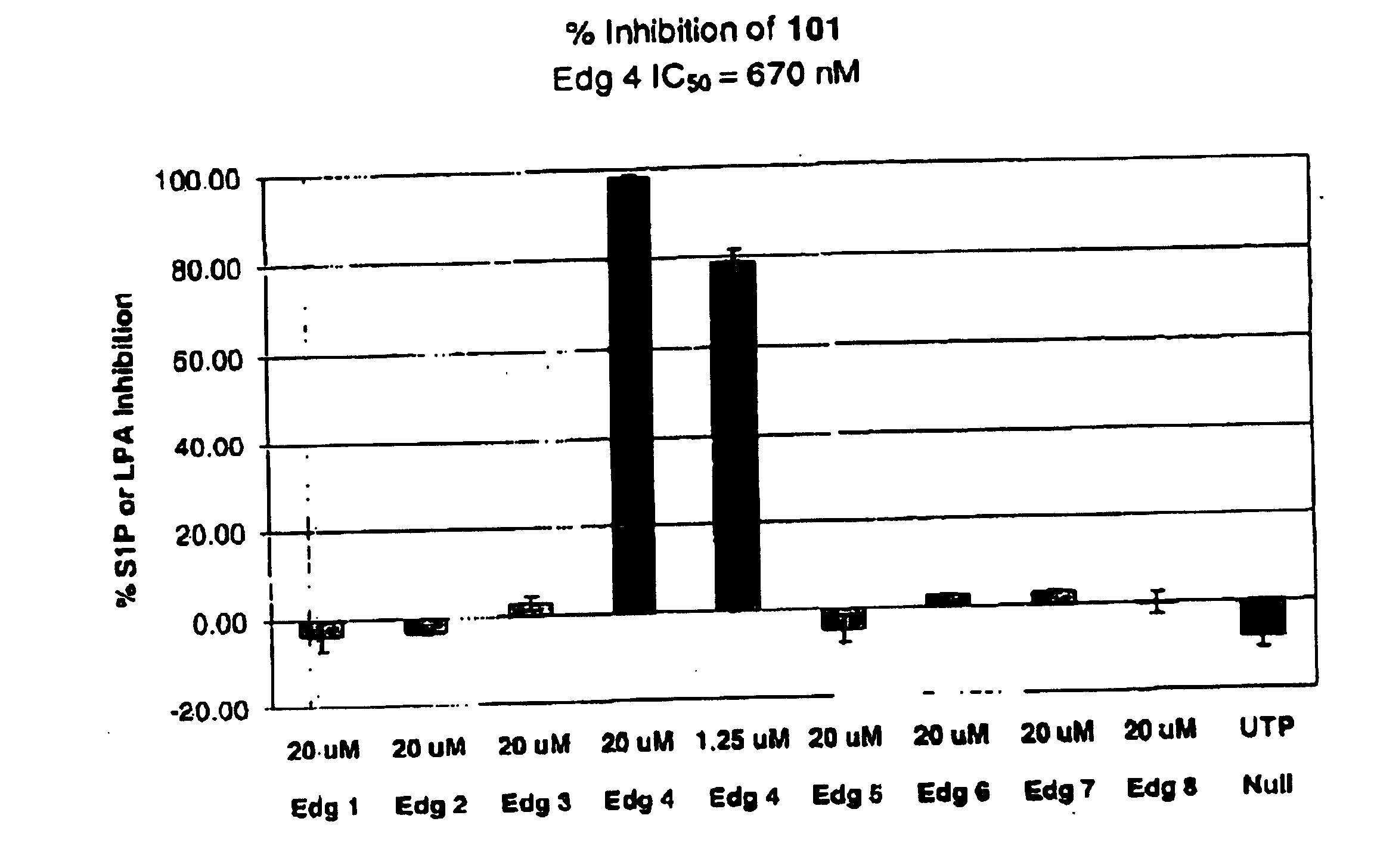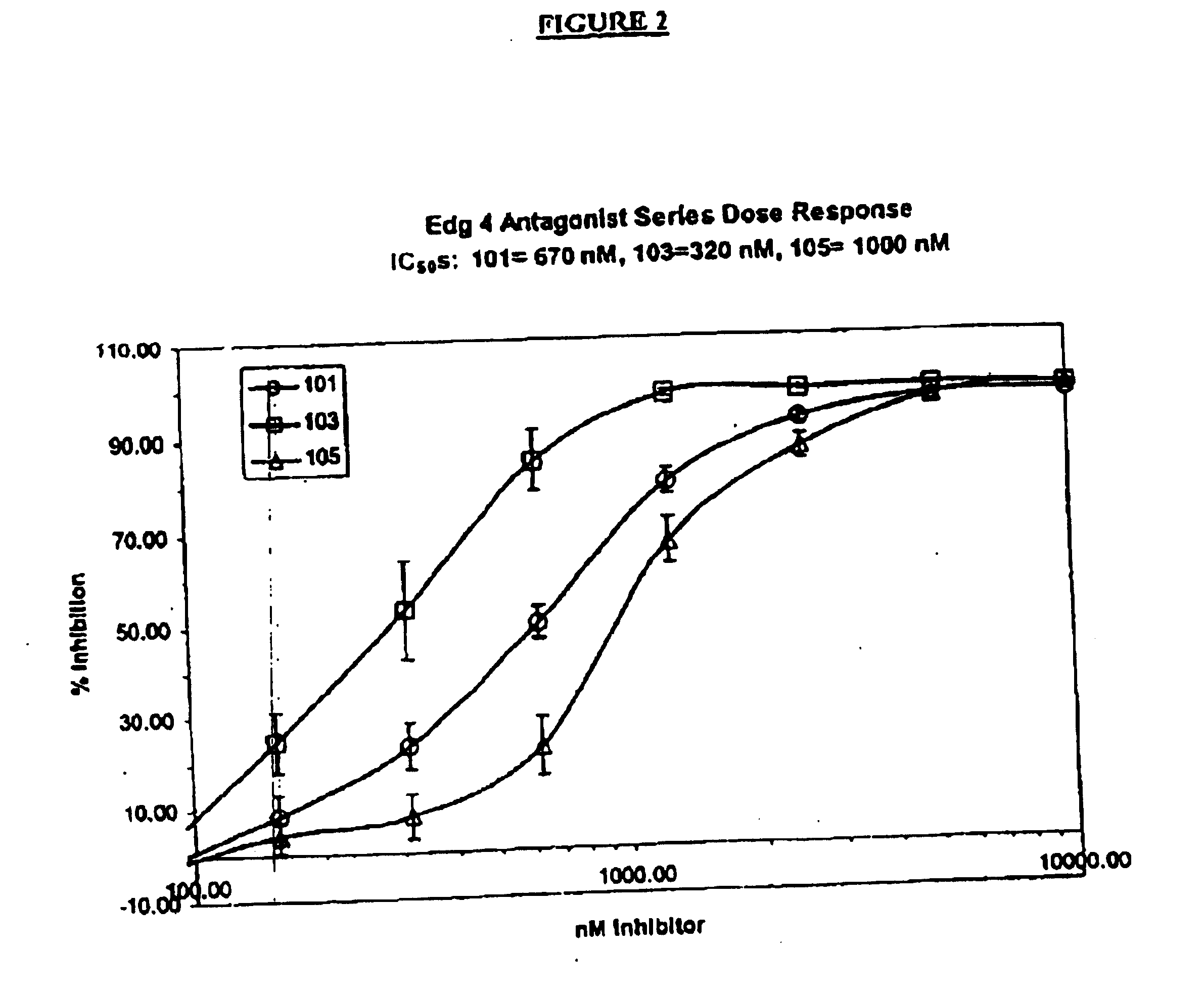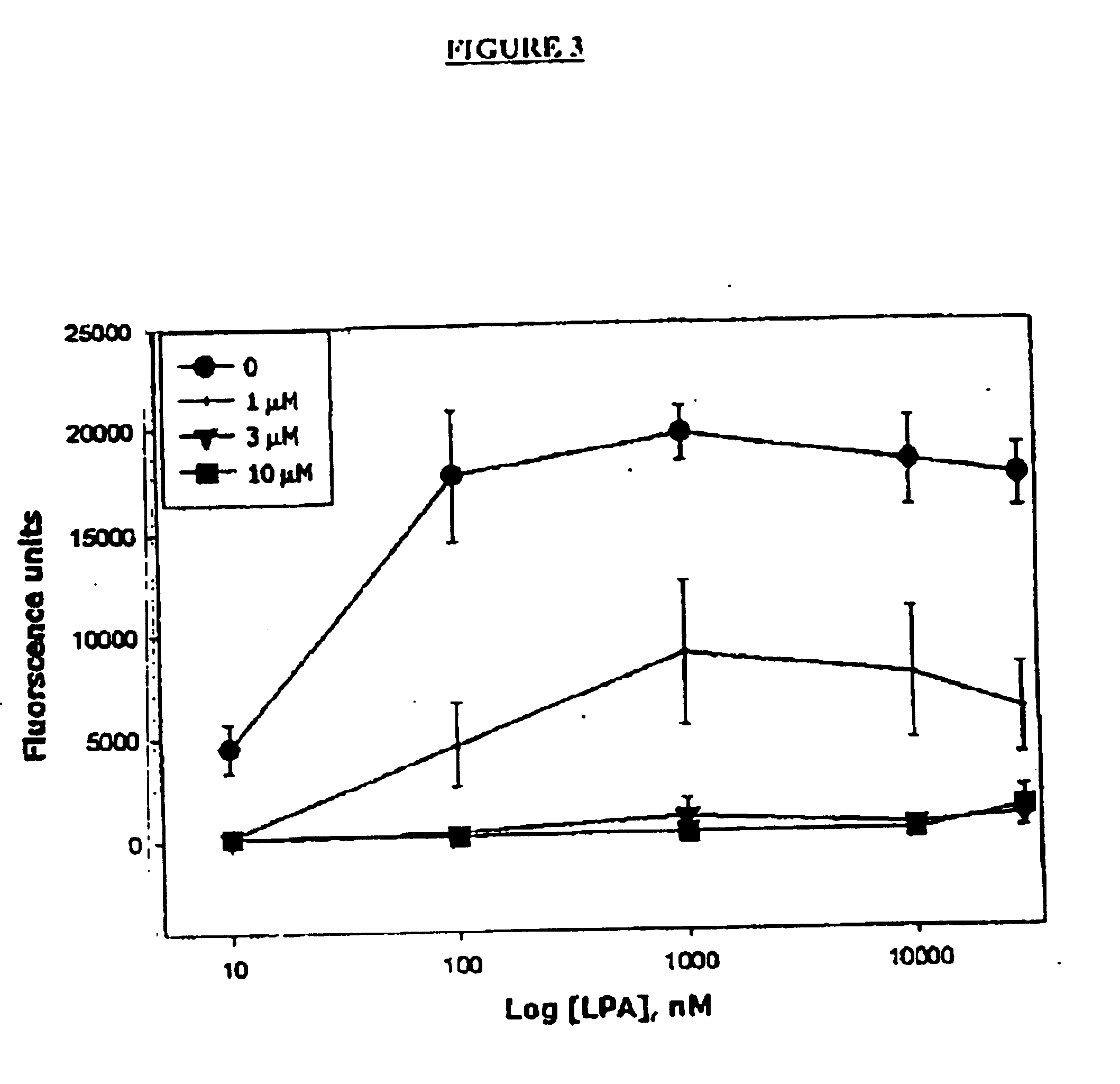Methods of treating conditions associated with an EDG-4 receptor
a technology of edg-4 receptor and biological activity, which is applied in the direction of biocide, heterocyclic compound active ingredients, amide active ingredients, etc., can solve the problems of poor physicochemical properties, limited potential use of pharmaceutical agents, and ineffective discrimination of phospholipid compounds, so as to achieve the effect of modulating the biological activity of the edg-4 receptor
- Summary
- Abstract
- Description
- Claims
- Application Information
AI Technical Summary
Benefits of technology
Problems solved by technology
Method used
Image
Examples
example 1
6.1. Example 1
Synthesis of 4,4,4-trifluoro-3-oxo-N-(5-phenyl-2H-pyrazol-3-yl)-butyramide (101)
[0395] Ethyl 4,4,4-trifluoroacetoacetate (3.45 mL, 23.6 mmol) and acetic acid (5.2 mL) were added to 5-phenyl-1H-pyrazol-3-ylamine (2.5 g, 15.7 mmol). The reaction mixture was heated for 2.5 hours at 120° C., cooled to room temperature, concentrated in vacuo and purified by flash chromatography on silica gel (chloroform / methanol / concentrated aqueous animonium hydroxide) to provide 3.35 g (72% yield) of 101 as a white solid. 1H NMR (300 MHz, DMSO-d6) δ: 12.8 (s, 1H), 10.6 (s, 1H), 7.85 (m, 2H), 7.30 (m, 3H), 6.92 (s, 1H), 3.04 (m, 1H), 2.72 (m, 1H). APCI-MS: m / z=298 [C13H,10F3N3O2+H]. Melting range: 318.6-321.1° C. (decomposed).
example 2
6.2. Example 2
Synthesis of N-[5-(3,4-dichloro-phenyl)-2H-pyrazol-3-yl]4,4,4-trifluoro-3-oxo-butyramide (103)
[0396] Thiosemicarbazide (1.15 g, 12.6 mmol) was added to 3′,4′-dichloroacetophenone (2.0 g, 10.6 mmol) in acetic acid (0.12 mL) and ethanol (21 mL) (Dimmock et al., 1991, Eur. J. Med. Chem. 26:529). The reaction mixture was stirred for 4 days at room temperature, concentrated in vacuo and the resultant oil was taken up in chloroform. The chloroform solution was washed successively with saturated aqueous sodium bicarbonate, water and brine, dried with sodium sulfate and concentrated in vacuo to give 2.47 g (89%) of the thiosemicarbazone as a white solid. 1H NMR (DMSO-d6) δ: 9.7 (br, 1H), 8.37 (s, 1H), 8.28 (m, 1H), 8.22 (s, 1H), 7.89 (m, 1H), 7.13 (m, 1H), 2.24 (s, 3H).
[0397] The thiosemicarbazone of 3′,4′-dichloroacetophenone (2.5 g, 9.43 mmol) was added to a solution of lithium diisopropylamnide (39.6 mmol) in THF (20 mL) at 0 ° C. (Beam, et al., 1997, J. Heterocyclic Che...
example 3
6.3. Example 3
Synthesis of 4,4-4-trifluoro-N-[5-(4-methoxy-phenyl)-2-pyrazol-3-yl]-3-oxo-butyramide (105)
[0399] Following the procedure of Example 1, 5-(4-methoxy-phenyl)-2H-pyrazol-3-ylamine (0.20 g, 1.05 mmol) (Beam, et al., 1997, J. Heterocyclic Chem. 34:1549; Grandin, 1971, Bull. Chim. Soc. Fr. 4002) was reacted with ethyl 4,4,4-trifluoroacetoacetate (0.23 mL, 1.60 mmol) to provide 177 mg (51%) of 105 as a tan solid. 1H NMR (300 MHz, DMSO-d6) δ: 12.62 (s, 1H), 10.57 (s, 1H), 7.77 (m, 2H), 6.92 (m, 3H), 3.70 (s, 3H), 2.93 (m, 1H), 2.68 (m, 1H). APCI-MS: m / z=328 [C14H12F3N303+H]. Melting Range: 307-310 ° C. (decomposed).
PUM
| Property | Measurement | Unit |
|---|---|---|
| Mass | aaaaa | aaaaa |
| Molar density | aaaaa | aaaaa |
| Molar density | aaaaa | aaaaa |
Abstract
Description
Claims
Application Information
 Login to View More
Login to View More - R&D
- Intellectual Property
- Life Sciences
- Materials
- Tech Scout
- Unparalleled Data Quality
- Higher Quality Content
- 60% Fewer Hallucinations
Browse by: Latest US Patents, China's latest patents, Technical Efficacy Thesaurus, Application Domain, Technology Topic, Popular Technical Reports.
© 2025 PatSnap. All rights reserved.Legal|Privacy policy|Modern Slavery Act Transparency Statement|Sitemap|About US| Contact US: help@patsnap.com



